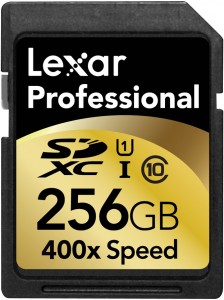How to Choose the Right Memory Stick
Flash data storage devices can be bought in in different shapes and sizes. Differing capacity memory sticks are suited to different data storage applications.
Tens of Millions of Flash data storage devices are bought across the globe year on year, with many being used incorrectly.
Taking a little time to assess your needs before making the wrong purchase will let you to make an informed decision and as a result you will end up with a far better data storage device that is fit for purpose.
Types of Memory Cards
There are several formats that are used by the majority of large manufacturers. The most widely used are SD cards, Micro and Mini SD cards, USB Flash, and CompactFlash.
The 2 most important details when selecting data storage, are the memory capacity of the stick and the transfer speed.
Memory technology moves quite quickly resulting in ever greater storage capacity and an increase in data transfer speed.
The bigger and quicker the memory card, the more expensive it tends to be. Following on from the recent growth in the use of tablets for HD videos and gaming, storing large files on small portable memory storage has become even more useful.
Stick Capacity
At present, in 2014, flash memory sticks and cards are available up to 256GB and capacity is anticipated to hit 2TB by the end of the decade.

Mobile memory storage is ever more stable and reliable, giving users more security and confidence than was considered acceptable just a short while ago.
Many memory sticks and cards are hot swappable which means that you can remove them from your devices and computers without needing to eject them.
Flash storage drives are also designed to be compatible with both Apple and Microsoft, so transferring data onto your computer is easy for using at a later date.
CompactFlash storage cards
More expensive SLR cameras usually allow for at least two different memory card options to be used and will take CompactFlash memory (usually the preferred option for commercial photographers) as well as SDXC memory as well.
For photographers, often they only have a split second to capture a special moment, so they need to know that the images they take are safely stored on a 100% reliable card.
Compact Flash data cards are some of the most dependable data cards and the most trusted. The majority of wedding day photography specialists choose a few lesser volume memory cards during important shoots like these rather than saving all of their images one large capacity card.
This provides added protection against failure because if disaster struck and, if a data failure occurs, they’ll just lose a single segment of their saved work, rather than losing it all.
In spite of the high level of reliability of modern storage, it is still sensible to keep your data safe by saving it using this method as it can save a lot of tears later.
As a consequence of their compact dimensions, memory cards and sticks are an incredibly handy method of storing large volumes of information for either ease of mobility or safety.
Cards and sticks can be easily carried in a wallet, pocket or purse, or discreetly hidden to secure your most important intellectual property.
Flash memory comes in two types, USB and an array of memory card drives which each require either an appropriate flash card slot or a multi-card reader unit which connects to a PC or Mac via the USB socket.
The electronic devices, cameras or gaming portals you own or intend to purchase will dictate which types of cards you will require.
If you are intending to store documents from your computer then a USB flash drive should be your preferred device. With the sale price of memory cards and sticks falling, this is the perfect moment to invest in newer, faster and larger capacity sticks and cards to safeguard your valuable data.